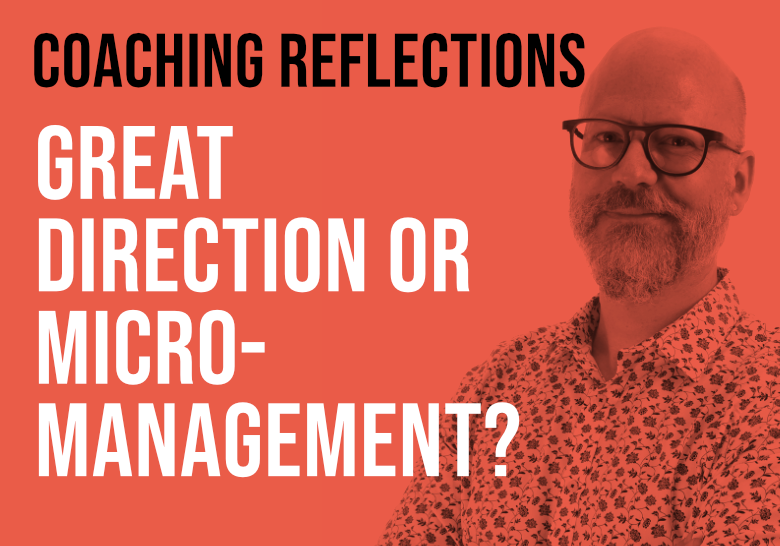What is the right balance between direction and micromanagement?
Transcript
Intro
[00:00:00] Andy Polaine: What is the right balance between direction and micromanagement?
Perfectionism
[00:00:03] Andy Polaine: One of my early learnings in a leadership role was even though I had hired a super talented group of people, I noticed that the work wasn’t quite as good as it could be. I just felt like I’ll just let them do their stuff.
But actually it became clear that when I did give them direction, the quality of the work went up, because everyone can get too close to their work and they can do with some direction and coaching. That’s why people like me exists. Why coaches in all sorts of walks of life exist.
I think the temptation for a lot of design leaders is frankly the desire to get back on the tools and actually make something. I think the other thing is that it’s hard sometimes to see work done worse than you would’ve done it.
The trick is to assess when it matters. Sometimes it really does. Sometimes there’s work that you do not want to let out. It’s not ready to go out there into the world because it’s gonna cause problems later on or harm or anything like that.
Sometimes things don’t matter quite as much, or you can let them take longer.
If you try and be a perfectionist with everything, and let’s face it, a lot of us designers can be that way, you’ll end up micromanaging. It’s basically directing someone’s hands to do the stuff.
Learned Helplessness
[00:01:07] Andy Polaine: The paradox here is that the team end up in a state of learned helplessness and the work gets worse. Your team use you as a crutch. They can’t do anything or they dare not to do anything, or they end up in a state of apathy without you directing them. So it’s really much better to build up a robust critique and feedback culture, and that’s one of the ways you really raise the quality.
The advantage that design leaders have is they have some positive or negative role modeling because you’re mostly in middle management. There’s usually very few in the C-suite and so you usually have a boss who is managing you, and that person may be micromanaging you and you can reflect on what that feels like and one of the things is that sense of not being trusted and the loss of agency.
I know that sounds really obvious, but I hear this all the time in coaching that a coachee is complaining about being micromanaged and at the same time is accidentally doing that to their team.
Outro
[00:01:59] Andy Polaine: I hope that’s useful for you. If you’d like to check out my coaching practice, it is at polaine.com/coaching, and I’ll put the link below. If you’ve got any of your own tips around how you avoid micromanaging or how you give your team agency and trust and let them grow, I’d love to hear them.
Thanks very much, and I’ll see you again next time.


